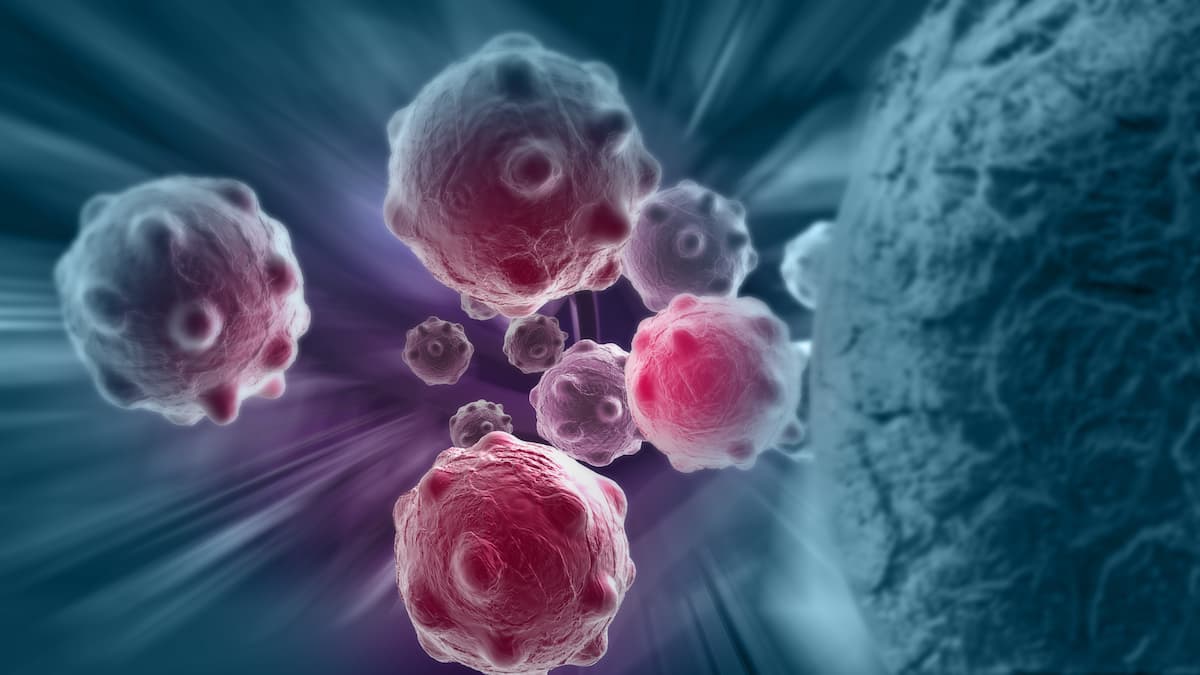Orca-T Shows Survival Benefit in Elderly Hematologic Malignancy Population
Older patients with hematological malignancies who received Orca-T therapy plus myeloablative chemotherapy have similar relapse-free survival rates compared with younger patients.
“Orca-T has potential to be a reduced toxicity alternative to conventional allogeneic transplant,” lead study author Caspian H. Oliai, MD, MS, said in a presentation of the data.

Treatment consisting of Orca-T and conditioning with myeloablative chemotherapy showed similar safety and efficacy to standard-of-care allogeneic transplant in a cohort of patients 55 years and older with hematologic malignancies, according to data from a phase 1b study (NCT04013685) presented at the 2023 American Society of Hematology (ASH) Annual Meeting and Exposition.
The 12-month relapse-free survival (RFS) rate in the younger age group (n = 39; 18 to <55) was 84.8% (95% CI, 67.0%-93.5%) vs 82.3% (95% CI, 59.4%-93.0%) in the older age group (n = 25; ≥55). Moreover, the 1-year rate of non–relapse mortality remained at 0 in both populations. The 1-year overall survival (OS) rate was 100% (95% CI, 100%-100%) in the younger cohort vs 95.5% (95% CI, 71.9%-99.3%) in the older cohort.
“Orca-T has potential to be a reduced toxicity alternative to conventional allogeneic transplant,” lead study author Caspian H. Oliai, MD, MS, medical director of the UCLA Bone Marrow Transplantation Stem Cell Processing Center, Jonsson Comprehensive Cancer Center at the University of California Los Angeles in California, said in a presentation of the data.
The multicenter, single-arm study enrolled patients with acute leukemia in complete remission (CR)/CR with incomplete count recovery (CRi); myelodysplastic syndrome (MDS); and chronic myeloid leukemia (CML) in chronic phase. Patients were between the ages of 18 and 75 years with an 8/8 matched related or unrelated donor. They had to have a Hematopoietic Cell Transplantation–specific Comorbidity Index (HCT-CI) of 4 or less, a Karnofsky performance score (KPS) of at least 70, adequate organ function, and be eligible to receive a myeloablative regimen of intravenous busulfan at 9.6 mg/kg, fludarabine at 160 mg/m2, and thiotepa (BFT) at 10 mg/kg plus GVHD prophylaxis with single-agent tacrolimus.
The primary end points were the incidence of primary graft failure and the incidence of severe acute graft-vs-host disease (GVHD).
In the younger patient population, the median age was 47 years and the median duration on study was 12 months. Approximately half of patients were female (49%) and 13% were Hispanic or Latino. Baseline HCT-CI scores were 0, 1, 2, 3, or 4 in 51%, 8%, 8%, 23%, and 10% of patients, respectively. Acute myeloid leukemia (AML; 74%) was the most common primary disease, followed by high-/very high–risk MDS (10%), ALL (8%), and CML (8%). In this group, 31% of patients had minimal residual disease (MRD) positivity.
In the older patient population, the median age was 59 years and the median duration on study was 12 months. Thirty-six percent of patients were female and 12% were Hispanic or Latino. Baseline HCT-CI scores were 0, 1, 2, 3, or 4 in 32%, 16%, 16%, 24%, and 12% of patients, respectively. Similarly, AML was the most common primary disease (44%) followed by high-/very high–risk MDS (32%), ALL (12%), CML (8%), and mixed phenotype leukemia (MPAL; 4%). Twenty-four percent of patients had MRD-positive disease.
Regarding the frequency of GVHD, grade 3 or greater acute GVHD occurred in only 1 older patient. Moderate-to-severe chronic GVHD occurred in 3 younger patients, all of which were moderate events, and 3 older patients, 1 of which was a severe event.
With a median follow-up of 12 months, 1 younger patient experienced graft failure. Grade 4 infections occurred only in 3 older patients; no grade 5 events occurred. Grade 3 mucositis occurred in 1 younger patient and 1 older patient; no cases of grade 4/5 events occurred.
The median donor chimerism at 3 months was greater than 90% in both age groups.
“Using Orca-T with myeloablative BFT conditioning has the potential to improve outcomes for older patients, based on more than 95% OS and 1-year transplant-related mortality of 0%,” Oliai concluded.
Orca-T is being compared with standard-of-care therapy in the ongoing phase 3 Orca Precision-T trial (NCT05316701). To be eligible for enrollment, patients must have AML, ALL, MPAL, and undifferentiated leukemia in CR/CRi; or high-risk or therapy-related MDS, including those who have active disease at the time of transplant and no greater than 10% bone marrow blast burden. Patients must be planning to undergo myeloablative allogeneic hematopoietic stem cell transplant including myeloablative therapy with BFT, total body irradiation (TBI)/etoposide, or TBI/cyclophosphamide. Additional eligibility criteria require an 8/8 matched related or unrelated donor, HCT-CI of 4 or less, KPS of at least 70, age between 18 and 65 years, and adequate organ function.
In the trial, patients will be randomly assigned to experimental therapy (n = 87) with Orca-T plus single-agent tacrolimus prophylaxis or standard of care (n = 87) consisting of unmanipulated allograft plus prophylactic therapy with tacrolimus and methotrexate.
Chronic GVHD-free survival will be the primary end point, and secondary end points include GVHD-free RFS, moderate-to-severe chronic GVHD, and RFS.
Reference
Oliai CH, Pantin JM, Hoeg RT, et al. Optimizing outcomes with myeloablative conditioning in older patients: efficacy and safety of precision engineered Orca-T in patients > 55 years old with hematologic malignancies. Blood. 2023;142(suppl 1):230. doi:10.1182/blood-2023-186749